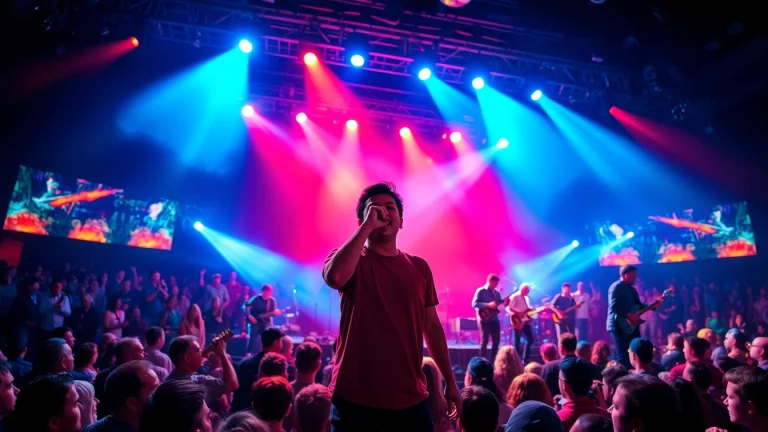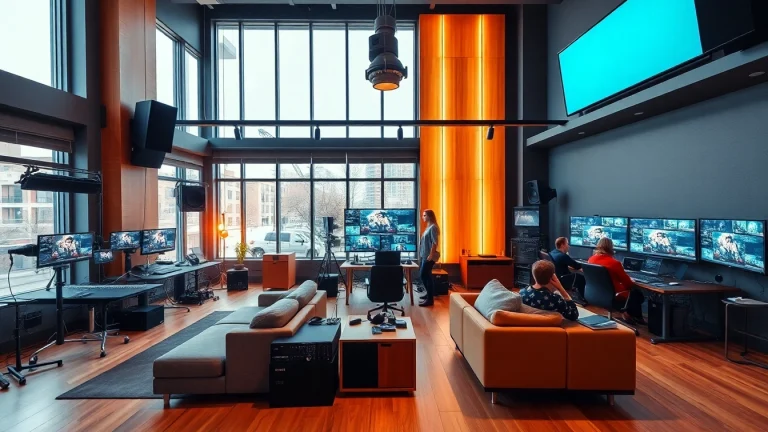
Mastering Performance in Music: Techniques and Strategies for Artists
The Power of Performance in Music
Performance in music is an art form that transcends mere notes and rhythms. It is a dynamic experience that creates a connection between the artist and the audience, transforming a simple recital into an unforgettable moment. At its core, performance embodies expression, emotion, and interaction, essential elements that contribute to an artist’s identity and the memorable experiences of the audience. As artists navigate their careers, mastering the nuances of performance becomes vital for cultivating a dedicated fanbase and succeeding in a competitive industry. This article explores the intricate world of musical performance, offering insights, strategies, and historical context to enrich both performers and enthusiasts alike.
Understanding Performance Artistry
The essence of performance artistry lies in its ability to convey emotion and story through music. Musicians employ a variety of techniques, styles, and interpretations to breathe life into their compositions. Understanding performance artistry involves recognizing the convergence of technical skill, audience engagement, and personal expression.
Every performance is a unique journey for both the artist and the audience. The emotional landscape can drastically shift depending on the choices made by the performer, ranging from the stylization of delivery to the interplay with instruments. Historical figures like Ella Fitzgerald and Jimi Hendrix exemplify how personal flair can redefine genres and elevate the performance to an art form. By engaging their audiences on a deeper emotional level, these icons set new standards for what it means to perform.
How Performance Captivates Audiences
Performance captivates audiences through a combination of visuals, sound, and energy. The atmosphere is charged with anticipation, and when an artist steps onto the stage, a connection is formed that transcends the ordinary experience of listening to music. Factors such as stage presence, vocal dynamics, emotional delivery, and even the artist’s attire contribute to the overall experience. A study by the Stanford University found that audience members often respond more positively to performances that involve visible passion and energy from the artist.
This connection is further enhanced when performers interact with their audience, fostering an environment of participation and shared experience. Whether through eye contact, direct conversation, or engaging in audience activities, artists can elevate their performances and leave lasting impressions.
Elements of a Memorable Performance
There are several key elements that contribute to the creation of a memorable performance:
- Emotional Engagement: Artists who convey genuine emotions can evoke stronger responses from their audiences.
- Storytelling: A narrative woven throughout a performance creates an immersive experience.
- Stage Design and Lighting: Visual elements significantly impact the audience’s perception and experience of the performance.
- Authenticity: An artist’s true self resonates more deeply with audiences, fostering trust and connection.
- Interactivity: Engaging the audience invites them into the performance, making them feel like active participants rather than passive observers.
Techniques to Enhance Your Stage Performance
Vocal and Instrumental Techniques
Vocal and instrumental techniques are fundamental for any performer aiming to captivate their audience. Vocalists must master various techniques such as breath control, pitch accuracy, and emotional delivery to convey the song’s message effectively. Studying breathing patterns, vocal warm-ups, and even meditation can enhance vocal performance.
Instrumentalists, on the other hand, should focus on proficiency and versatility with their instruments. Adopting different playing techniques — such as pizzicato in string playing or fingerpicking in guitar — broadens one’s ability to deliver a polished performance. Technical mastery, however, promises only half the battle; incorporating improvisation and personal flair can dramatically elevate a live set.
Engagement Strategies with Your Audience
Engaging with an audience is crucial for a successful performance. There are several effective strategies that performers can adopt to ensure their engagements resonate:
- Ask Questions: Directing questions to the audience during performances can encourage interaction and engagement.
- Invite Participation: Incorporating clapping, singing along, or even inviting audience members on stage fosters community and excitement.
- Share Stories: Adding personal anecdotes or stories related to the music can create a connection and enrich the audience’s experience.
Utilizing Body Language and Stage Presence
Effective body language and stage presence can enhance a performance significantly. Performers are encouraged to forget about inhibitions and allow their bodies to express what their voices convey. This can involve strategic movement on stage, interacting with fellow band members, and utilizing facial expressions to match the emotions of the music being performed.
Stage presence is often defined by confidence and comfort. A performer with strong stage presence naturally draws audiences into their world, captivating them to the point where they forget everything beyond the performance. Techniques including eye contact, purposeful movement, and vocal dynamics help communicate sincerity and keep audience engagement high.
Performance Metrics: Measuring Success
Defining Key Performance Indicators (KPIs)
To track performance success effectively, artists must establish clear Key Performance Indicators (KPIs). These metrics can vary based on the performance’s nature and objectives but often include:
- General Audience Turnout
- Merchandise Sales
- Social Media Engagement (shares, likes, comments)
- Audience Feedback and Satisfaction Surveys
- Streaming Numbers Post-performance
Defining and monitoring these KPIs allow artists to understand their performance impact better and refine future performances accordingly.
Analyzing Audience Reactions
Analyzing audience reactions post-performance is crucial for refining live shows. This can be done via surveys, observation during performances, and social media feedback. Questions to consider include:
- Did the audience appear engaged and vocal during the performance?
- What was the general mood of the crowd?
- Were there specific moments in the performance that received more enthusiasm than others?
Understanding the dynamics of audience reactions enables artists to gauge what resonates most effectively with their fans.
Tools for Performance Evaluation
Several tools are available to help artists evaluate their performances. These can include:
- Performance recording software for reviewing setlists and arrangements.
- Fan engagement platforms that analyze streaming and listening patterns.
- Social listening tools to monitor and assess audience feedback across platforms.
Utilizing these tools, performers can analyze both quantitative and qualitative data, which helps refine their approach and adapt to audience preferences more accurately.
The Importance of Rehearsal in Performance
Creating Effective Rehearsal Schedules
Proper rehearsal is the bedrock of any successful performance. Creating a structured rehearsal schedule that encompasses various aspects of performance—such as singing, instrumentals, choreography, and staging—ensures that artists are adequately prepared.
Effective rehearsal schedules should also allocate time for individual practice, group collaboration, and performance simulation. This multifaceted approach allows artists to uncover potential shortcomings ahead of time while enhancing group synergy.
Practicing for Different Venues
Different venues often necessitate distinct approaches and adjustments to performance styles. Learning how venue acoustics, capacity, and audience demographics can affect a show is vital. For instance, intimate settings may call for subtlety and nuance, while larger arenas might require theatrical flair and bold interactions. A tailored performance style ensures that artists deliver memorable experiences irrespective of setting.
Feedback Loops: Learning from Each Gig
Incorporating feedback loops is crucial for professional growth. This can involve soliciting input from trusted colleagues, conducting self-assessments through performance recordings, and reflecting on audience reactions. Adopting a mindset of continuous improvement drives an artist toward excellence.
Post-performance meetings among band members to review what worked, what didn’t, and how they can enhance future performances create an enriching environment that fosters collaboration and development.
Case Studies: Successful Performances in Music History
Iconic Performances and Their Impact
Several performances throughout history have left indelible marks on music culture. One such example is Queen’s Live Aid concert in 1985. Freddie Mercury’s magnetic stage presence and the band’s cohesive execution are often cited as the highlight of the event, showcasing how performance transcends music, reviving the spirit of live rock in a unique manner.
Other iconic performances like Nirvana’s MTV Unplugged and Beyoncé’s Coachella set further illustrate how innovative staging and authenticity can create lasting impressions and have cultural implications that extend well beyond the performance itself.
Lessons from Live Music Legends
Legends such as Bruce Springsteen and Madonna have frequently set the standards for live performances through their engaging concerts. Bruce Springsteen’s storytelling through his shows emphasizes the power of narrative in music, while Madonna showcases how visual elements and performance artistry can captivate audiences.
Learning from these legends involves recognizing the importance of emotional engagement, visual storytelling, and maintaining a compelling and authentic connection with the audience throughout the performance.
Innovative Approaches to Live Performances
As technology evolves, so do live performances. Artists today explore innovative approaches that blend visual art, choreography, and multimedia elements. The rise of virtual reality concerts and holographic performances represents a critical turning point in the industry, expanding the definition of what a performance can be.
Furthermore, artists can experiment with mobile and digital platforms to engage fans in unique ways, enhancing the performance experience beyond the physical realm. This integration of technology and performance reflects the continual evolution of music as an art form, pushing boundaries and inviting new ways of audience engagement.


